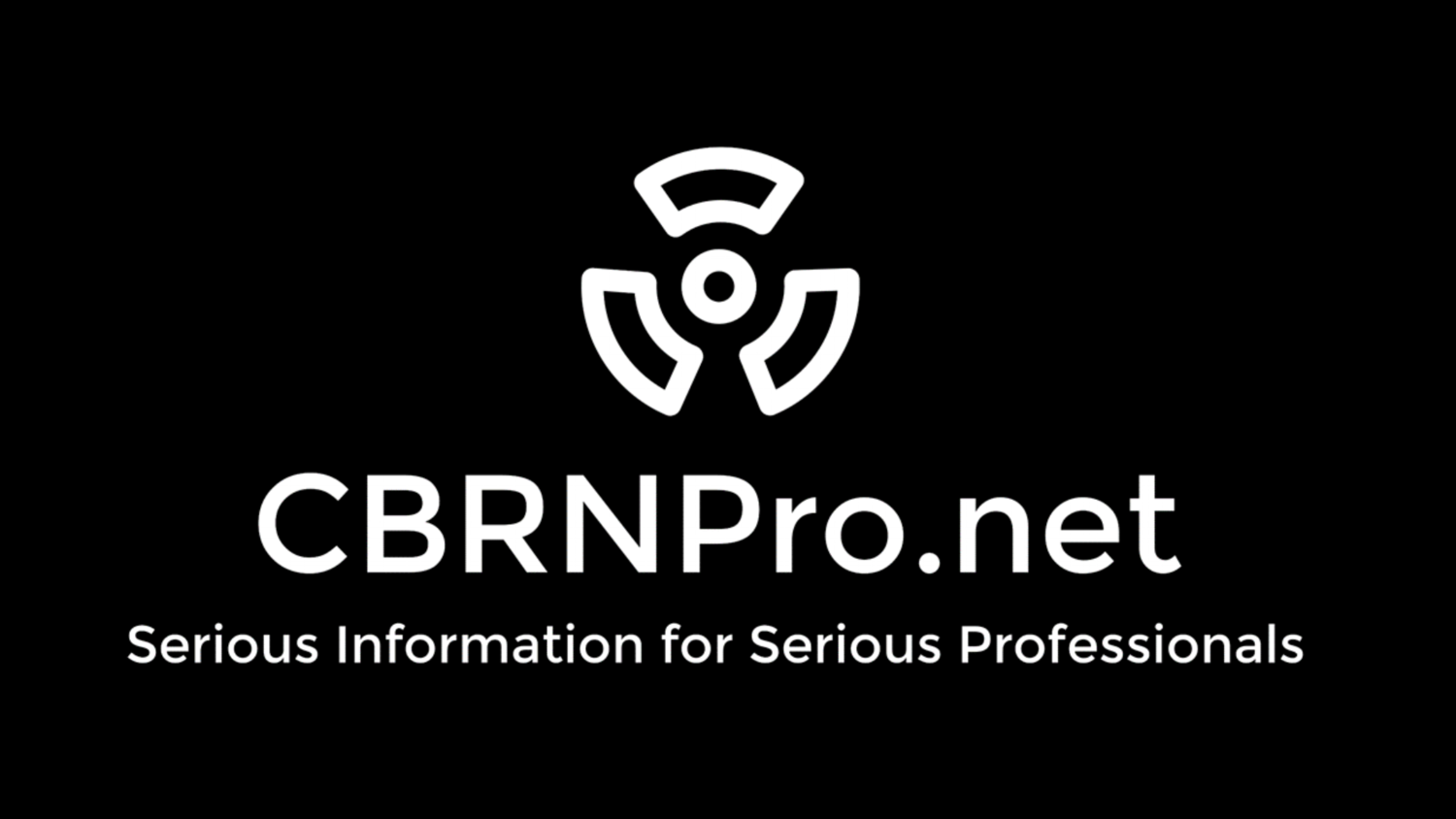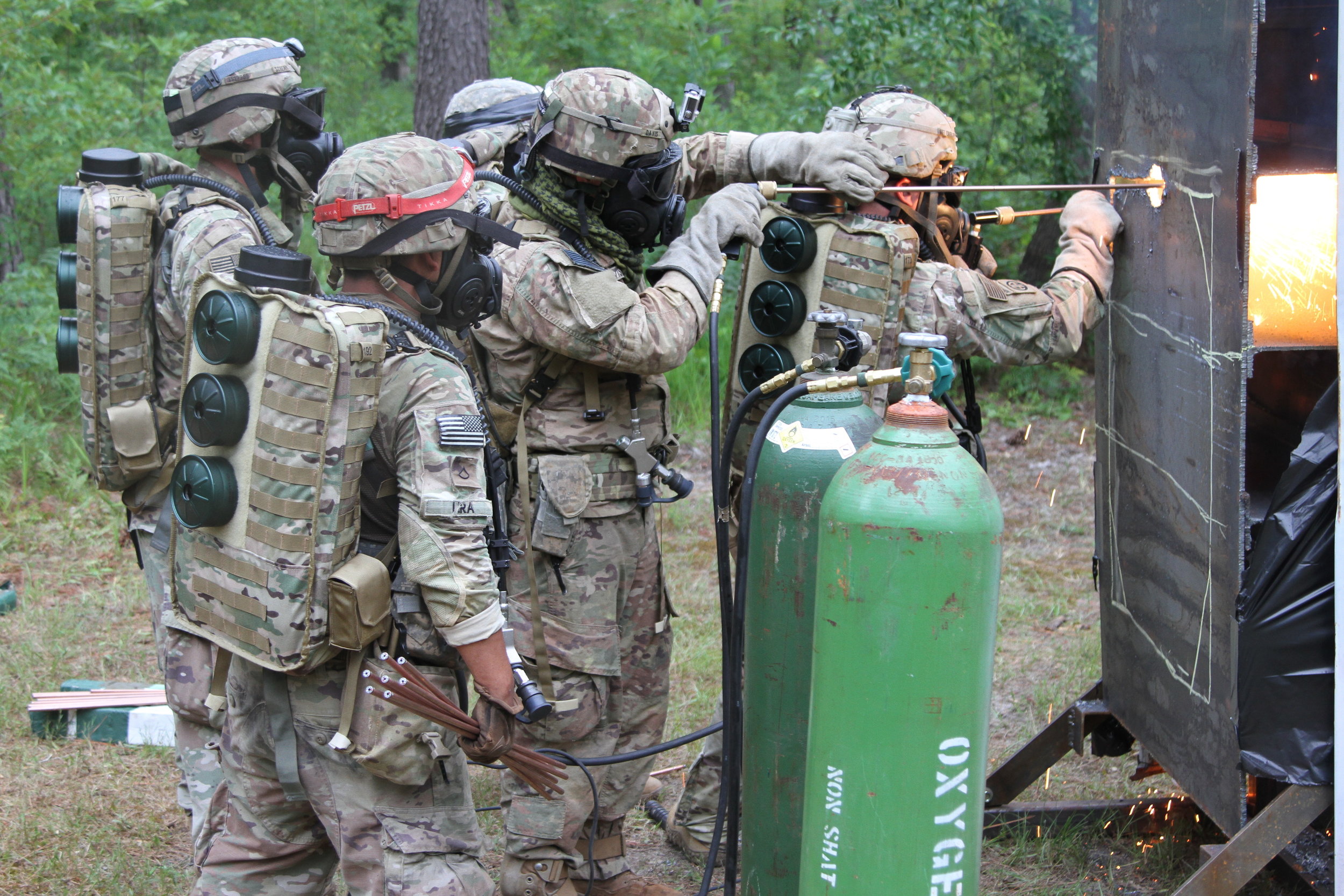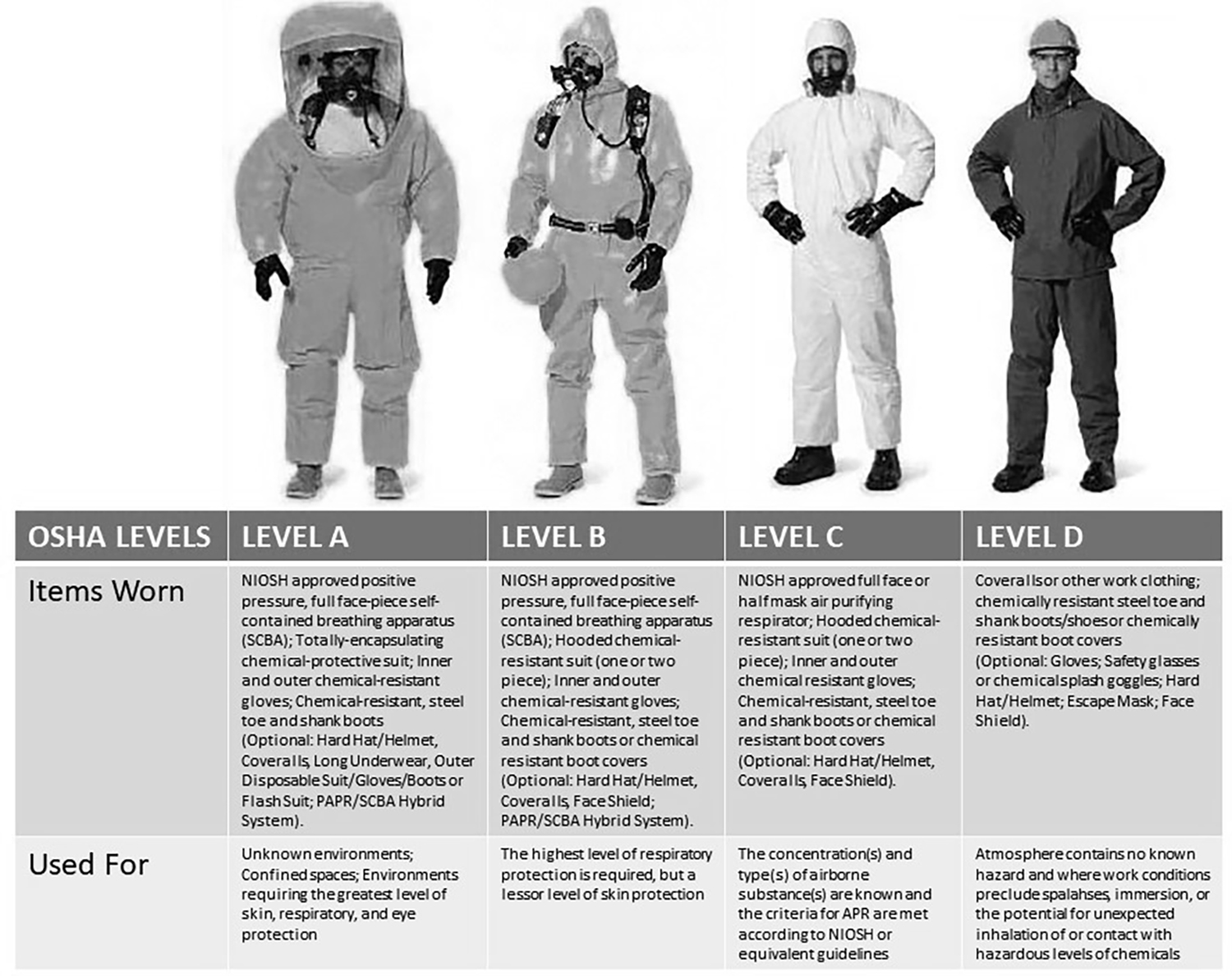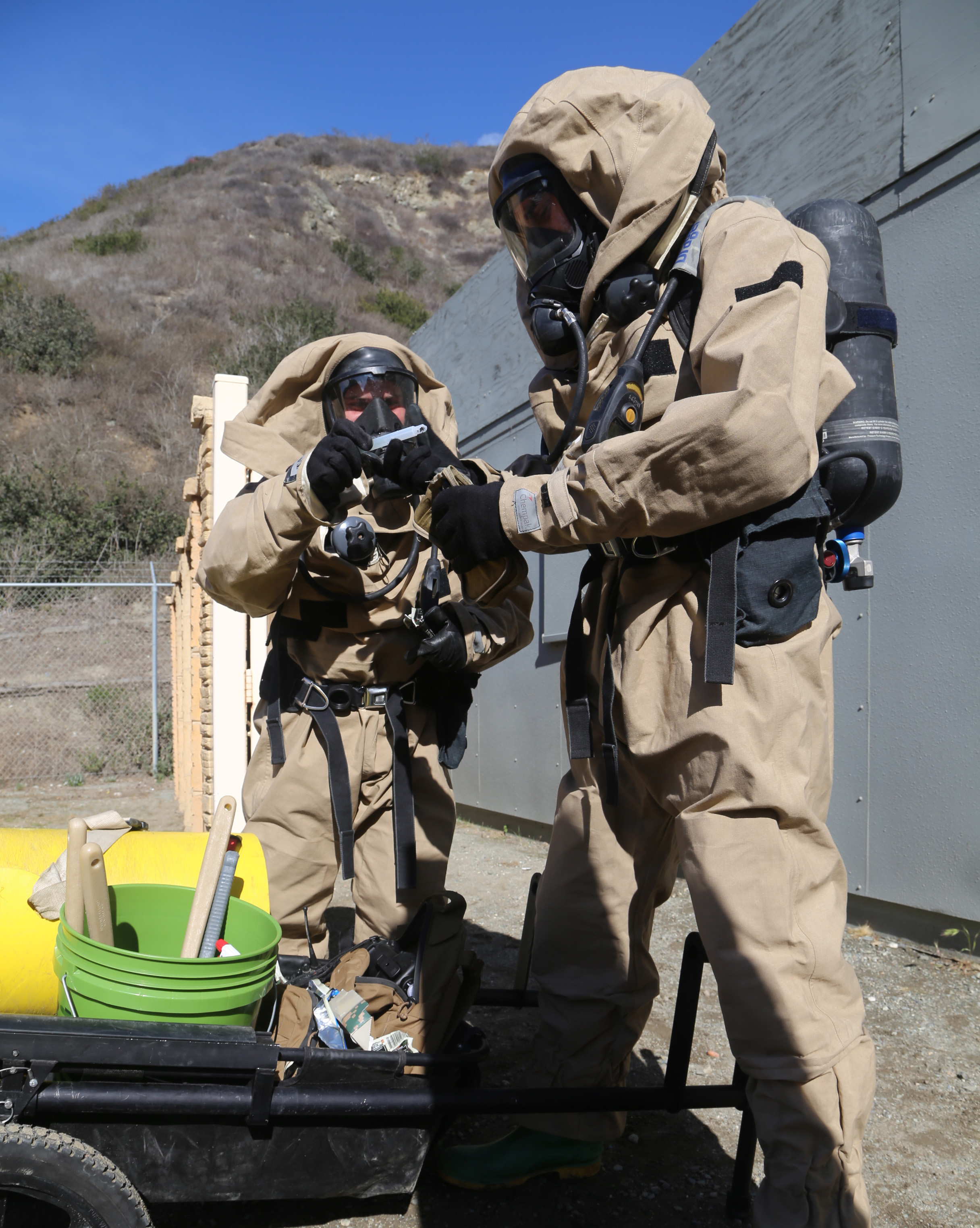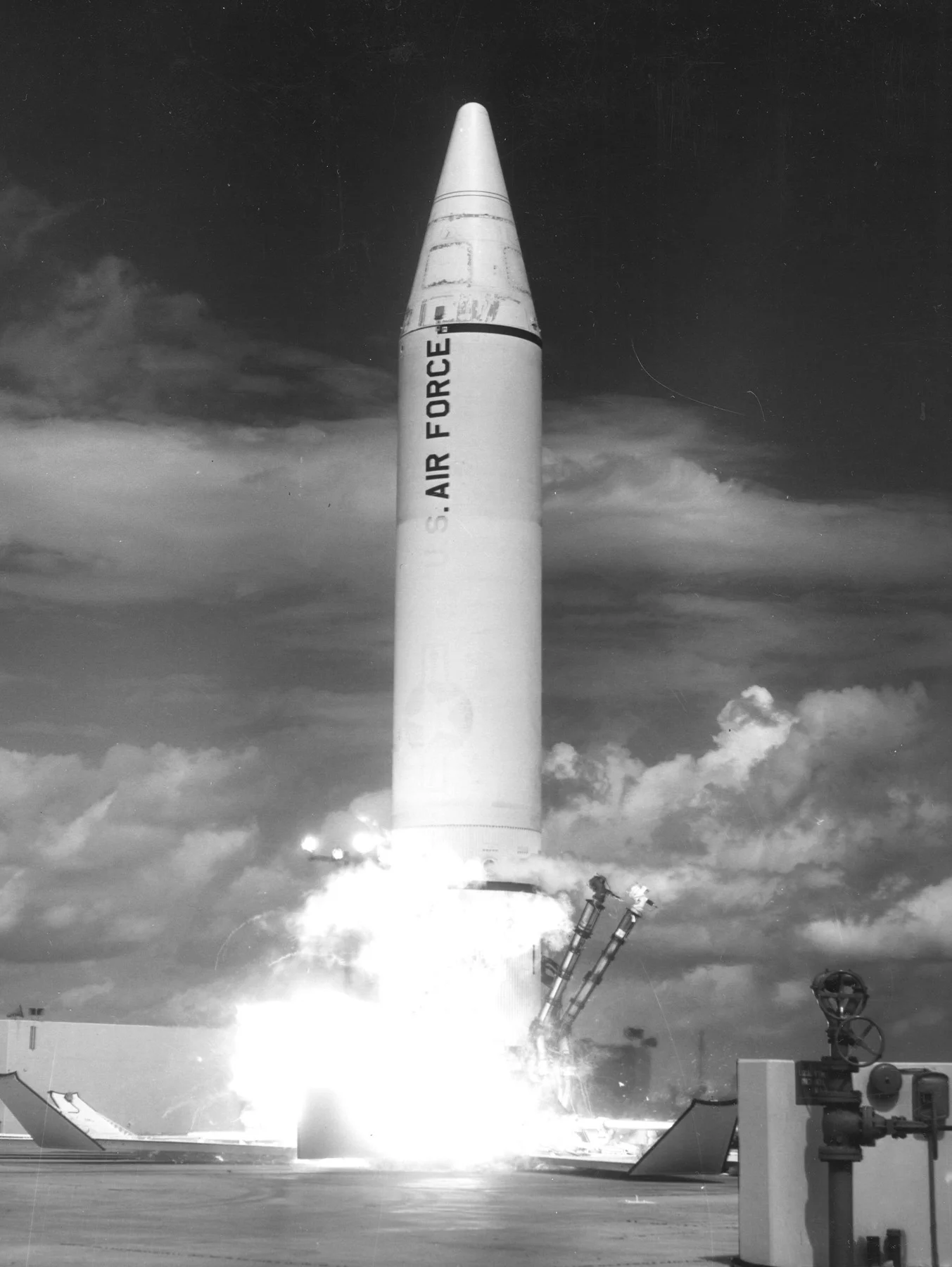“I don’t think you are doing that right…” Equipment selection and use in CBRN Operations, Part 1
The Basic Kit: PPE and Personal Safety Detectors
Introduction
CBRN world is full of technology, and discussions about CBRN operations often relate to equipment from personal protective suits and masks to decontamination rigs. The market is full of various “magic boxes” designed to provide CBRN operators with a plethora of information about their environments in the hotzone or military equipment designed to warn of impending CBRN attack, identify contamination, or conduct sampling and reconnaissance.
Many of these devices are in the hands of operators who lack an understanding of the technology behind them, and worse, what to use them for and more importantly, how not to use and interpret the data they provide. This series of articles attempts to examine some of the critical pieces of equipment common across most CBRN operations and the ways operators can utilize the equipment in their operations correctly. There are also misunderstandings between the HazMat community and the CBRN community about the differences between their operations. Those differences require different operating mindsets and equipment sets. While the two communities share much in common, the way they use their equipment can vary. As such, this series examines some of those differences as well.
This series builds on an early one at CBRNPro.net, a system for categorizing CBRN operations using a target-based approach that drives equipment selection, training, and mission planning. You can read those here:
An Alternate Approach to CBRN Operations
Following Captain Obvious: A guide to CBRN operations against obvious targets
Don’t Break the Beaker: CBRN Operations Against Small Scale Production Facilities and Laboratories
CBRN Operations and Industrial Scale Production/State-Sponsored Programs
Proving the Negative and Cleaned Sites
A note for our NATO and other allied friends overseas: This series of articles/posts primarily references US civilian and military sources and doctrines. When necessary I’ll include links to associated information for EU/NATO partners and other allied nations at the bottom of my post. These are not comprehensive, but I hope it helps! Fortunately, most US standards referenced herein are close to those in other places, but when in doubt, check your local/national requirements.
The Basic Kit
Introduction
The basic kit for most/all CBRN missions has three components:
1) Personal Protective Equipment (PPE)
2) Gamma Radiation Monitor/Dosimeter
3) Air Monitoring Instrument for Confined Spaces
To which operators may add a personal chemical warfare agent monitor (like a JCAD M4A1) and colorimetric tape or paper to detect corrosive or other hazardous materials (more on that later) depending on the scenario and anticipated threats.
Personal Protective Equipment (PPE)
At the most basic level, CBRN operators must first protect themselves in contaminated environments. PPE selection varies by organization, mission, and suspected contaminants. PPE must first address airway protection, either through filtration (with or without positive pressure) or the use of a Self-Contained Breathing Apparatus (SCBA) or Rebreather. Newer options combine one or more of these elements, offering advanced CBRN operators to switch from PAPR filters to SCBA or back as the situation determines.
United States (6 June 2019): Paratroopers assigned to 37th Brigade Engineer Battalion, 2nd Brigade Combat Team, 82nd Airborne Division conduct simulated subterranean breaching techniques and CBRN Training using hybrid PAPR/SCBA systems. (Source: DVIDSHUB, SSG Anthony Johnson, 2nd BCT, 82nd Airborne Division Public Affairs)
The use of hybrid PAPR/SCBA systems and rebreathers are a significant difference in CBRN operations from the equipment used by most HazMat teams. HazMat entries into the Hotzone don’t last long enough to require extended breathing apparatus and their safety guidelines may limit their entry times in high temperatures.. Further, the average hazmat team or fire department has enough personnel to avoid long linger times in the hotzone that PAPR/SCBA and rebreathers offer.
Hybrid systems do have civilian applications, particularly in police and security operations expected to conduct “Tactical CBRN” operations: SWAT teams and protective details like the US Secret Service or certain facility security elements including DoD and other federal police forces. Some special operations forces (SOF) operate with PAPR/SCBA combos for similar reasons – they offer flexible protection that combined with a JSLIST or similar suit does not overly interfere with their weapons and tactics, allowing them to conduct dynamic entries and fight in contaminated or potentially hazardous environments.
The second consideration is contamination or “splash” protection. Here the options vary widely, from charcoal impregnated materials like those in a JSLIST or MOPP suit to fully-encapsulating Level A ensembles. The most basic level of protection includes chemically resistant boots or shoe/boot covers, Nitrile gloves, and an N-100 or better dust mask, half-face APR, or full-face APR along with any necessary tactical gear. It is not unusual to see this sort of basic “just above Level D” protection used by OPCW and other teams with high levels of expertise. Yes, it comes with risks, mainly splash hazards, but if you are careful and know the hazards/risks, it can be all you need for some sampling, inspection, and site exploitation operations.
Unfortunately, there is a profound misunderstanding in some quarters of the CBRN world as to PPE selection. The criteria and decision trees used in most HazMat work are ill-suited to many types of CBRN operations. Likewise, it is common to find a lack of knowledge among military members (CBRN and otherwise) as to the protection offered by military suits and masks against many hazardous materials that causes them to overestimate their level of protection.
US Air Force MOPP Levels circa 2011. (Source: US Air Force, Public Domain)
OSHA Levels of Chemical Protection (Source: Image Public Domain; Chart: CBRNPro.net)
While most CBRN operators are familiar with the OSHA levels of protection: Levels A, B, C, and D, and the military MOPP levels 0,1,2,3 and 4, there is an unofficial but valuable system that uses a merging of these two in CBRN operations that is not codified nor often discussed, but is sometimes used by highly specialized CBRN operators.
This unofficial system of protection that has no name is situationally dependent. At its basic level, it consists of chemical-resistant over boots, booties, or shoe/boot covers, a mask (N-100 particulate filter or a half mask/full-facepiece APR), and nitrile gloves. Operators may also utilize some eye protection or goggles, depending on the situation and the type of mask worn. This basic protective kit is useful and has the added advantage of being both compact and lightweight. An operator can carry such a setup in a pouch or pocket. This essential protection kit is helpful in many scenarios where contamination is not likely, and the material in question remains in a safe container during handling, inspection, or other exploitation operations. However, it does require a knowledgeable and highly trained user who understands the risks inherent in such low-level protection.
This level of protection is typical when receiving overpacked samples or assessing a dual-use industrial facility during a formal inspection and in some Sensitive Site Exploitations (SSE) scenarios with minimal risks of skin exposure or direct contamination. It also makes an excellent “emergency” kit for non-CBRN missions where full MOPP or other equipment isn’t necessary or possible. With an N-100 style particulate mask an operator may covertly tuck their basic protection kit in a pocket, using it should the need arise. This basic kit is also useful in a variety of other scenarios, including triage/first aid bloodborne pathogen protection. This level of protection is a modified form of OSHA level D and sits between MOPP 0 and MOPP 1 (with the boots an element of MOPP 2) and OSHA Level D and C (since it lacks the suit).
Thursday, Aug. 29, 2013 - Members of the UN Inspection Team take samples from the ground in the Damascus countryside of Zamalka, Syria. Note the modified protective level between Level D/C. (Source: Uncredited citizen journalism image provided by the Local Committee of Arbeen/AP News)
Moving up from the most basic level requires the addition of a protective suit of some sort, either military-type charcoal impregnated ensemble or Tyvek or another overall suit, with or without a hood, worn in combination with the basic setup (mask, gloves, booties or shoe covers) described above. A protective suit, boot/shoe covers, and N-100 particulate filter forms the most basic ensemble for most radioactive material and many bio scenarios with the addition of goggles or splash shield. It is a modified form of MOPP 2, and OSHA Level C. Operators may choose, depending on the situation, to also upgrade their gloves to include a second layer over the nitriles of more robust chemically resistant gloves.
Maline, Bosnia-Herzegovina (27 September 2017): A Spanish CBRN Specialist conducts field sampling and testing during a chemical spill training event at the Euro-Atlantic Disaster Response Coordination Centre (EADRCC) “Bosnia-Hercegovina 2017” consequence management exercise. Note the APR with PAPR and impregnated suit with nitrile gloves, a slightly modified Level C/MOPP 4. (Source: DVIDSHub.net, Public Domain, US Army Reserve Photo taken by Major Jeku Arce, 221st Public Affairs Detachment)
The next level up from this adds additional airway protection in the form of a full-face respirator, with or without the extra protection offered by a Powered Air-Purifying Respirator (PAPR) to provide positive pressure and increase comfort. This level of protection may or may not reach true Level C or MOPP 4 depending on the suit worn and the agent of concern and may or may not incorporate taped seams/gaps depending on the threat. It will also usually include other protective measures like thicker chemically resistant gloves and a hood. It is a “fightable” outfit that allows the addition of tactical equipment, body armor, helmets, etc.
The next level swaps the respirator for an SCBA, rebreather, or a combined PAPR/SCBA hybrid system. At this level, the operator may swap a JSLIST or another impregnated suit for something offering increased splash protection either adding a Tyvek or other protective outer layer or switching to Tyvek in place of the impregnated suit. At this level, operators tape their suit seams. Operators can also swap boot covers for dedicated chemically resistant boots. Operators may also need to combine their PPE Ensemble with tactical gear and weapons, and while this is also a “fightable” outfit, it comes with more constraints due to the air pack. This ensemble is a pure OSHA Level B (depending on suit selection) and has no MOPP equivalent.
Camp Pendleton, California (7 February 2014) - SGT Jeffrey Fahrenbach and LCPL Matthew Streitenberger, CBRN Specialists with the 11th MEU, conduct CBRN Sensitive Site Exploitation training. (Source: DVIDSHub.net, US Marine Corps Photo by CPL Demetrius Morgan)
Lastly, is the full OSHA Level A encapsulating ensemble with SCBA or rebreather, to which some teams add flash protection for specific fire scenarios. Level A is often the last resort for some CBRN operations and not possible for many regular military CBRN organizations who do not possess specialized equipment nor have unique mission profiles requiring such equipment. For some CBRN operators in domestic response (i.e., CST-WMD Teams) or facility or consequence management responses, Level A is the default level of protection. The availability and option to go to level A are therefore dependent on the unit involved, the amount of knowledge about the hazards present, and the role the unit or individuals play in the operation. It is also mission dependent. Even a well equipped and highly specialized unit may not choose Level A in certain tactical situations or because operational constraints or time on target make it prohibitively difficult.
Colts Neck, New Jersey (25 April 2019) - 21st CST-WMD (New Jersey) survey team member SGT Mauricio Caceres dons his Level A suit during an Army North recertification evaluation. (Source: DVIDSHub.net, Mark Olsen, New Jersey National Guard).
The “CBRN Operational” levels I’ve described do not directly conform to either OSHA or MOPP levels at the bottom end. Instead, they combine elements of both in a configurable and modified form that allows operators to tailor their PPE to the situation. Because some tactical CBRN operators also have tactical considerations that drive PPE selection and require body armor, ballistic helmets, weapons, ammunition, etc., the ability to tailor protection and incorporate those elements also plays a role in PPE selection. I’ve seen teams play at trying to fight in Level A, but let’s be honest: it isn’t very practical, though possible. Except in very few unlikely scenarios, if there are human threats in the area NOT in Level A that you need to fight on entry, then you probably don’t need Level A. This is the reason most tactical CBRN teams stop at a modified Level B or C. Similarly, CBRN operators supporting some Special Operations Forces (SOF) missions must match the maximum protective level of the organization they are supporting. You can’t be the only guy in Level A and expect someone to kick down a door in front of you and clear a room before your entry if they are wearing nothing but a JSLIST and an APR.
The simple fact is that Level A does not work for most tactical CBRN situations for a host of reasons, whereas HAZMAT or consequence management/domestic response teams might use it as a default. CBRN Operators must accept more risks due to operational constraints and employ a “needs must” outlook in PPE selection that goes beyond CBRN hazards and accounts for tactical (human) hazards, explosives, etc. It is this factor, more than any other that separates CRBN from HazMat (a topic I’ve already addressed here).
Personal Safety Detectors
Basics
Because of the nature of CBRN operations and the configurable nature of their protective ensembles, the ability to know when and how to upgrade protection levels is vital and perhaps the least trained and practiced skill in CBRN operations. Whereas hazardous materials training and the OSHA levels start high and work down as knowledge about the threat increases, some CBRN operators can go either way, depending on their intel about the target and the CBRN threat they encounter once there.
To take protective actions on target, CBRN operators must possess the means to recognize a change in conditions necessitating a PPE change or develop alternate solutions to allow entry with the PPE they have on hand (like ventilating a confined space to reduce concentration levels of a toxic substance allowing entry with APRs). That requires a basic kit that covers most eventualities. As an experienced operator knows, it is not unusual to find unexpected explosive, radiological, or other threats present, especially in clandestine lab scenarios. Even some drug labs now pose new toxic risks due to the presence of fentanyl or other materials.
The essential detector, therefore, is the one between the CBRN operator’s ears. CBRN operators unskilled in identifying sophisticated threats in clan labs or industrial facilities should not operate there without the presence of a subject matter expert. Similarly, CBRN operators must often presume that their mission is more likely to be a CBRNE mission given that many CBRN weapons usually utilize explosives. Further, it is common to encounter explosives production labs mistaken by tactical units for drug or CBRN labs or vice versa. Likewise, it is common to find more than one activity in a clan lab - many have both drug and explosive hazards or both CBRN and explosive risks.
Being able to identify a process or recognize a threat based on the combination of materials present is an essential CBRN skill that can only come through training, education, and experience. Without such knowledge, any “CBRN operator” monkeying around in clan lab or industrial facility is just a guy in a suit waiting to be an object lesson for others on what not to do. Either don’t attempt it with an inexperienced operator or make sure you have a subject matter expert with you.
Part of the human element in personal protection also comes from the ability to categorize the threat properly and adjust your equipment and mission plan accordingly. Operating this way requires a target-based approach to CBRN Operations. I’ve written about that before in An Alternate Approach to CBRN Operations and subsequent articles (see the links at the top of this article/post).
Beyond the human element, operators should have on hand two (or three) pieces of equipment. The first is a radiation detector/dosimeter with an alarm feature. For US/NATO military operators this is often a UDR-13 or equivalent pager-sized device that monitors both dose rate and dose with alarms for both that detect gamma and neutron radiation. Teams required to track individual dosimetry may add a second dedicated dosimeter badge or another passive device to an active detector/dosimeter. Personal radiation dosimeter/detectors are an absolute essential for all CBRN operators on all missions. Experienced operators know that it is not unusual to encounter radioactive material in CBRN operations even where you didn’t expect to find it and the only way you usually know it is there is with such a device. Should you get lucky and discover a labeled radioactive threat, you might have already received a big dose by the time you see it if you don’t have a detector.
The second essential piece of basic kit is an air monitoring instrument, usually a “confined space monitor” or another atmospheric monitoring instrument. This instrument may vary according to mission profile: for example, an operation involving a suspected chemical round in the open might use a point or area detector standard in military units for chemical agent detection. Usually, these detectors are Ion Mobility Spectrum (IMS) based. However, many CBRN operations are in a confined space (to include indoor facilities) or where there are unknowns. Therefore, the monitor must consist of the “big four” sensors required for confined space entry: Oxygen (O2), Lower Explosive Limit (LEL), Hydrogen Sulfide (H2S), and Carbon Monoxide (CO). In addition to this, many teams also utilize equipment containing a Volatile Organic Compound (VOC) monitor, usually a photo Ionization Detector (PID).
Outside of CBRN specific teams, most military units possess only the standard personal protective kit: a MOPP suit of some sort with gloves and overboots and an Air Purifying Respirator (APR) with some point and area detection equipment for militarized chemical agents and radiation.[1] Most military units have basic radiation monitors and dosimeters, IMS based CW agent point sensors and area alarms along with colorimetric based detectors like M8 paper. Only more specialized CBRN teams have confined space monitors and advanced radiation detection and survey equipment. I have a lot to say about confined space and atmospheric monitoring in CBRN operations, but before I get to that, I want to address personal safety radiation detectors and dosimetry, which I’ll do in my next post.
Until then, stay safe out there and when in doubt, Keep Calm and Decon.
[1] Currently, this would be a JSLIST, personal protective mask, gloves, overboots, hood, colormetric detection papers, IMS-based point detectors and area alarms like the JCAD M4A1, dosimeters, and a radiation survey meter (AN/PDR-77 or equivelent).

